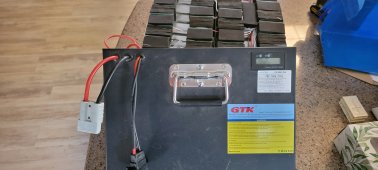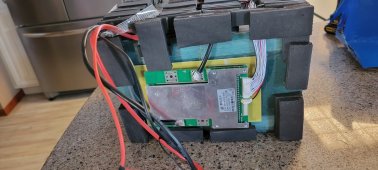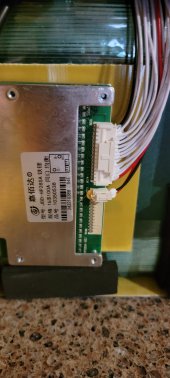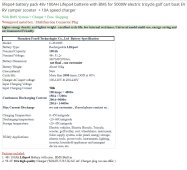lakespyder
New Member
- Joined
- May 2, 2022
- Messages
- 25
I actually bought a GTK pack for my golf cart from Ali Express and have been battling with the manufacturer ever since.

Battling even to the point that the company Foxelion created a fake SMS/text message to use as evidence in the dispute so Ali Express would deny my dispute and not allow me to return the battery. Now the BMS keeps tripping when I give the cart some throttle, making it unusable. Your videos inspired me to open it up and seek to change the BMS, but I did not find quite what I was expecting when I opened the case. Instead of 16 cells, there appear to be 48 individual cells each measuring approx 3/8" x 5.5" x 7".

The BMS is JBD-HP28SA and the pack is supposed to be 100AH 48V Lifepo4.

At this point, and being a newbie to lifepo4 I am hesitant to dig in any farther. I am hoping to get any advice that can be provide as to testing and possibly replacing the BMS. I would be comfortable swapping out the BMS as there are just 2 soldered connections and 2 plugs, but is there any good way for me to test to see if that is the problem before I do so? Would it be worthwhile to buy an upgraded BMS to replace this one? and if so, will the balancing wire plugin be the same? Is there a certain order that the BMS would need disconnected and reconnected if I do replace it to do it safely?
Thanks in advance!

Battling even to the point that the company Foxelion created a fake SMS/text message to use as evidence in the dispute so Ali Express would deny my dispute and not allow me to return the battery. Now the BMS keeps tripping when I give the cart some throttle, making it unusable. Your videos inspired me to open it up and seek to change the BMS, but I did not find quite what I was expecting when I opened the case. Instead of 16 cells, there appear to be 48 individual cells each measuring approx 3/8" x 5.5" x 7".

The BMS is JBD-HP28SA and the pack is supposed to be 100AH 48V Lifepo4.

At this point, and being a newbie to lifepo4 I am hesitant to dig in any farther. I am hoping to get any advice that can be provide as to testing and possibly replacing the BMS. I would be comfortable swapping out the BMS as there are just 2 soldered connections and 2 plugs, but is there any good way for me to test to see if that is the problem before I do so? Would it be worthwhile to buy an upgraded BMS to replace this one? and if so, will the balancing wire plugin be the same? Is there a certain order that the BMS would need disconnected and reconnected if I do replace it to do it safely?
Thanks in advance!





